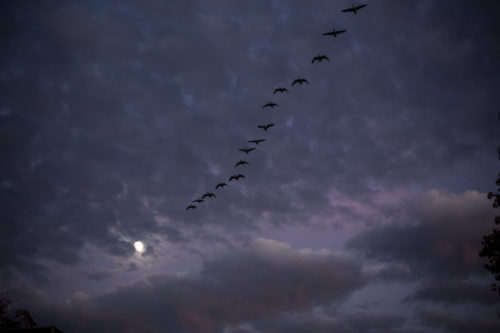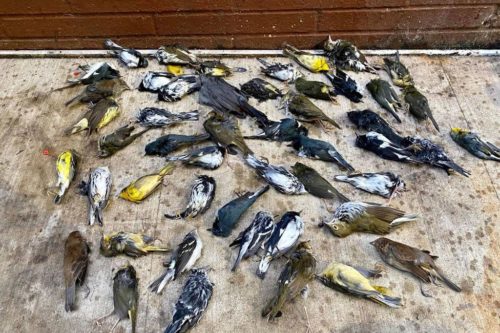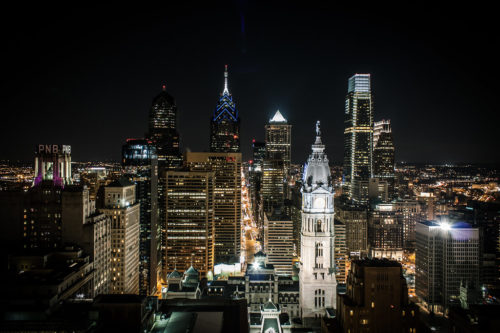Philadelphia, Pennsylvania —(Map)
Starting April 1, many of the skyscrapers and other buildings in Philadelphia will be going dark at night. Though the move will cut down on energy use, the main goal of the effort is to help protect migrating birds.
Many kinds of birds migrate twice a year, raising a family in one place during the warm summer months before flying to a warmer spot to spend the cold winter months. In the northern half of the world, many birds fly north in the summer and south in the winter, looking for food and better conditions.
😕
This image has not been loaded because of your cookie choices. To view the content, you can accept 'Non-necessary' cookies.
Many skyscrapers and other buildings in Philadelphia will be going dark at night soon to help protect migrating birds. In the northern half of the world, many birds fly north in the summer and south in the winter.
These migrations are hard, and many birds die along the way. Some of these deaths are the result of human actions, such as hunting, or clearing huge areas of land that used to be used by migrating birds.
But one of the biggest threats to migrating birds comes from things humans have built. Experts say that as many as one billion birds may die every year in the US alone as a result of flying into buildings. Other tall structures, such as power lines and cell towers also lead to many bird deaths.

(Source: Robert Couse-Baker, via Flickr.com.)
Now people in Philadelphia are working to remove at least one of the ways that migrating birds die: getting confused by the lights and glass of buildings along their migration paths.
Buildings are a special challenge for migrating birds. The windows can reflect things like the sky or tree branches, causing birds to fly directly into the glass.

(Source: Ian T. McFarland, via Flickr.com.)
Many birds migrate at night. Bright city lights add another layer of difficulty, confusing birds that might normally be guided by the stars.
Philadelphia got an sad reminder of that last October, when thousands of migrating birds were killed in one night. Over 1,000 birds were believed to have died in just one small area downtown. Scientists still aren’t sure what made that night so bad, but it may have been connected to the low clouds over the city at the time.

(Source: Stephen Maciejewski, via Academy of Natural Sciences.)
Now the city is beginning a program called Lights Out Philly. Twice a year (from April 1 to May 31, and from August 15 to November 15), the lights on many of the city’s buildings will be turned off or dimmed.
The program, run by Bird Safe Philly, is asking building owners and people who live in the area to turn off all outside lights that aren’t needed between midnight and 6 in the morning. So far, many of the city’s best-known and tallest buildings will be taking part. These include One and Two Liberty Place, the Comcast towers, and the BNY Mellon Center.

(Source: Shannon O’Toole, via Flickr.com.)
The Academy of Natural Sciences (ANS) at Drexel University helped organize the program with several other partners. Jason Weckstein, who works at ANS, points out that the problem isn’t new. He says that ANS has a bird in its collection that was killed in 1896 when lights were first put on Philadelphia’s City Hall tower.
Did You Know…?
The first Lights Out program was started in Toronto, Canada in 1993. Since then, dozens of other cities have joined in the effort, including New York, Chicago, Boston, and many others.
😕
This map has not been loaded because of your cookie choices. To view the content, you can accept 'Non-necessary' cookies.
